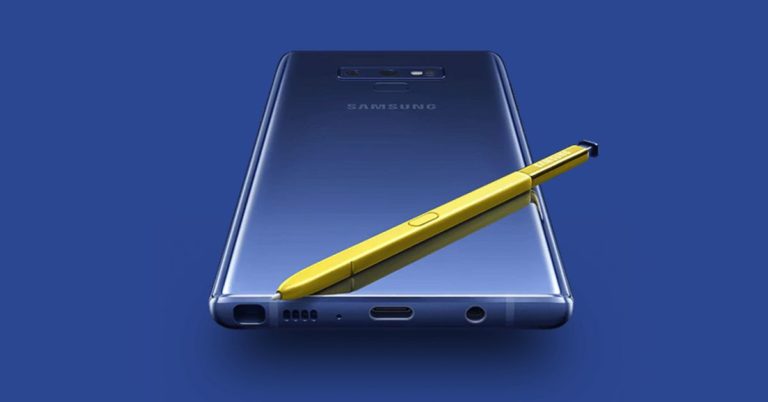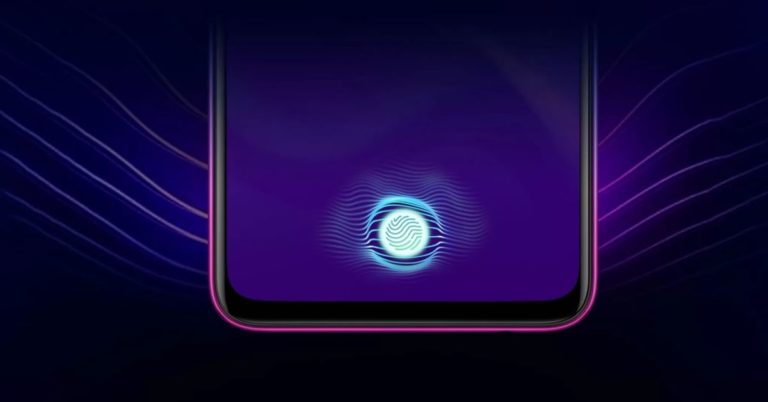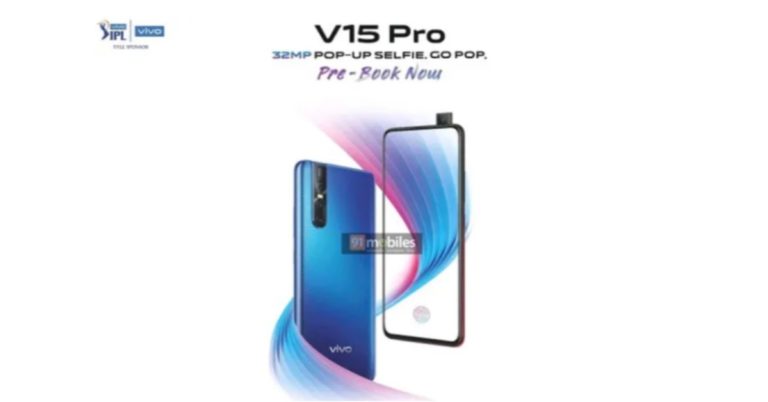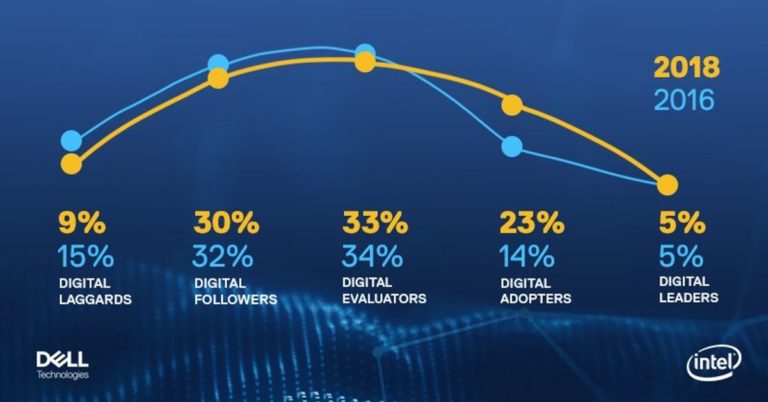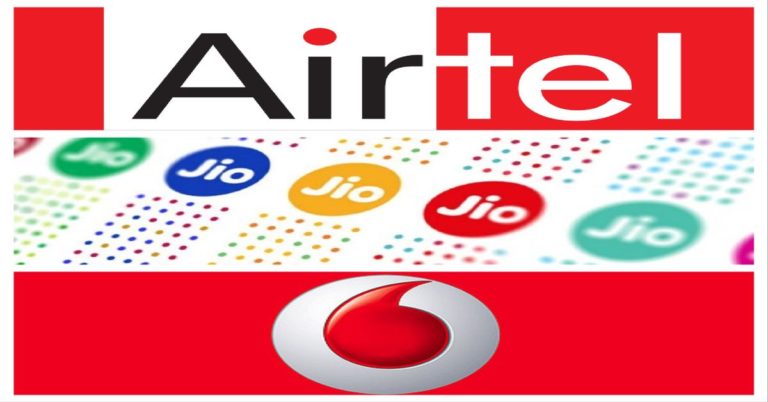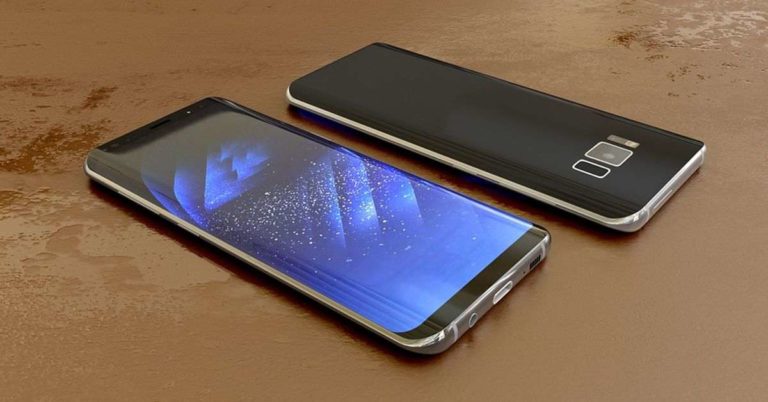Samsung Galaxy S10E image leaked, will sport an Infinity-O display
JioPhone 3: Ten things you should know about the upcoming smartphone
In This Article
Will come with a full touch screen display
 According to the report in Beetel Bite that quotes an anonymous Reliance Jio executive, JioPhone 3 will come with a 5-inch full touchscreen display. Considering that the other two devices launched by the company so far – JioPhone and JioPhone 2 – are feature phones and came with a keypad, this move by Reliance Jio is a big jump and it is most definitely a very welcome change.
According to the report in Beetel Bite that quotes an anonymous Reliance Jio executive, JioPhone 3 will come with a 5-inch full touchscreen display. Considering that the other two devices launched by the company so far – JioPhone and JioPhone 2 – are feature phones and came with a keypad, this move by Reliance Jio is a big jump and it is most definitely a very welcome change.
JioPhone 3: RAM and Storage
 The report also said that the executive suggested that JioPhone 3 will come with 2GB of RAM that will be coupled with 64GB of onboard storage. Furthermore, JioPhone 3 will also have support for a microSD card, however, as of now, there is no word on the capacity.
The report also said that the executive suggested that JioPhone 3 will come with 2GB of RAM that will be coupled with 64GB of onboard storage. Furthermore, JioPhone 3 will also have support for a microSD card, however, as of now, there is no word on the capacity.
JioPhone 3: Cameras
 For imaging duties, JioPhone 3 will reportedly come with a 5MP primary camera on its back panel. Customers will also get a 2MP front-facing snapper with which they will be able to click selfies and make video calls.
For imaging duties, JioPhone 3 will reportedly come with a 5MP primary camera on its back panel. Customers will also get a 2MP front-facing snapper with which they will be able to click selfies and make video calls.
JioPhone 3: Operating system
 While as of now, there is no confirmed news about the operating system that will be used on the device, the report has suggested that JioPhone 3 will either run a full-fledged version of KaiOS or Android Go.
While as of now, there is no confirmed news about the operating system that will be used on the device, the report has suggested that JioPhone 3 will either run a full-fledged version of KaiOS or Android Go.
Reliance Jio may have partnered with this company for JioPhone 3
 A prior report in Economic Times, Reliance Jio was in talks with the US-based manufacturer Flex to produce the JioPhone 3 smartphones in India. The same report also stated that the company has had discussions about placing a large order of the upcoming device.
A prior report in Economic Times, Reliance Jio was in talks with the US-based manufacturer Flex to produce the JioPhone 3 smartphones in India. The same report also stated that the company has had discussions about placing a large order of the upcoming device.
Flex has a manufacturing plant in India
 What plays as a key factor behind the deal between Reliance Jio and Flex is the fact that the US-based company already has a factory in India. The plant is located in Chennai and is said to produce around 4-5 million devices every month.
What plays as a key factor behind the deal between Reliance Jio and Flex is the fact that the US-based company already has a factory in India. The plant is located in Chennai and is said to produce around 4-5 million devices every month.
JioPhone 3 price (expected)
 Coming back to the report in Beetel Bite, the Reliance Jio executive also told the technology website that the upcoming JioPhone 3 will be priced at Rs 4,500 in India. When compared to JioPhone and JioPhone 2, this is quite a jump in pricing. However, considering it is a smartphone, it is still an entry-level price.
Coming back to the report in Beetel Bite, the Reliance Jio executive also told the technology website that the upcoming JioPhone 3 will be priced at Rs 4,500 in India. When compared to JioPhone and JioPhone 2, this is quite a jump in pricing. However, considering it is a smartphone, it is still an entry-level price.
JioPhone 3’s expected launch offers
 Although we are months away from the launch of JioPhone 3, analysts have guessed that the company may offer screen insurance as a part of the launch offers with the device. The cost of screen repair is one among the key factors why feature phone users hesitate to buy smartphones, so we wouldn’t be wrong to expect this.
Although we are months away from the launch of JioPhone 3, analysts have guessed that the company may offer screen insurance as a part of the launch offers with the device. The cost of screen repair is one among the key factors why feature phone users hesitate to buy smartphones, so we wouldn’t be wrong to expect this.
When can I pre-book?
 The report says that interested customers will be able to buy the JioPhone 3 starting July 2019. The upcoming JioPhone 3 smartphone will be available on Jio Stores, Reliance Digital stores, and Jio’s official website.
The report says that interested customers will be able to buy the JioPhone 3 starting July 2019. The upcoming JioPhone 3 smartphone will be available on Jio Stores, Reliance Digital stores, and Jio’s official website.
By when will I get the device?
 We should mention that while pre-booking of JioPhone 3 will begin in July 2019, the device will only be delivered to customers by August, so they would have to wait for a for a few weeks before they get their hands on their smartphone.
For the latest gadget and tech news, and gadget reviews, follow us on Twitter, Facebook and Instagram. For newest tech & gadget videos subscribe to our YouTube Channel.
We should mention that while pre-booking of JioPhone 3 will begin in July 2019, the device will only be delivered to customers by August, so they would have to wait for a for a few weeks before they get their hands on their smartphone.
For the latest gadget and tech news, and gadget reviews, follow us on Twitter, Facebook and Instagram. For newest tech & gadget videos subscribe to our YouTube Channel. Chrome browser now has Password Checkup extension: Google’s extra layer of digital security
- Open Chrome.
- Go on the Chrome Web Store and search for ‘Password Checkup’.
- Once opened, click ‘Add to Chrome’.
- Confirm that you want to add the extension to your Chrome.
- It will then install the extension.
- Once installed, a screen shield icon will appear on the top right of Chrome.
Google also said that the Cross-Account Protection measure will make sure the apps and websites where the users are using their Google account credentials to sign in is not compromised in case an attacker gets hold of the user’s profile. It is the first time the company is improving the security of Google sign-in for third-party platforms. “We created Cross Account Protection by working closely with other major technology companies, like Adobe, and the standards community at the Internet Engineering Task Force (IETF) and OpenID Foundation to make this easy for all apps to implement,” said Google. For the latest gadget and tech news, and gadget reviews, follow us on Twitter, Facebook and Instagram. For newest tech & gadget videos subscribe to our YouTube Channel.Today, we’re introducing two new updates that will help keep your data secure: Password Checkup, a Chrome extension that helps protect your accounts from third party data breaches, and a new feature called Cross Account Protection #saferinternetdayhttps://t.co/L4JSztM69Q pic.twitter.com/CuHKYF1Ghh
— Sundar Pichai (@sundarpichai) February 5, 2019
CoolPad Cool 3 vs Samsung Galaxy M10 vs Realme C1: Comparison
Oppo K1 with on-screen fingerprint scanner, 25MP selfie camera launched in India: Price, specifications and more
In This Article
Oppo K1 price and availability
Oppo K1 is available in only one variant in India that comes with 4GB of RAM and 64GB of internal storage and is priced at Rs 16,990. The newly launched handset is available in Astral Blue and Piano Black colours. A 6GB RAM model of Oppo K1 is also expected to launch at a later date in India. The model that has been launched today will go on sale via Flipkart starting February 12. As a part of launch offers, those who pay for the smartphone via Citibank credit and debit cards will get an instant discount of 10%. Other than this, no-cost EMIs, Flipkart’s buyback guarantee and Complete Mobile Protection plan are also available.Oppo K1 specifications
Coming to the specifications of Oppo K1, the smartphone runs Android 8.1 Oreo skinned with ColorOS 5.2 and features a 6.4-inch full-HD+ AMOLED display that has an aspect ratio of 19.5:9 and a screen-to-body ratio of 91%. Powered by an octa-core Snapdragon 660 processor, Oppo K1 comes with Adreno 512 GPU. The device has 4GB of RAM, 64GB of storage onboard and it can hold a microSD card of up to 256GB. On the camera front, Oppo K1 sports a dual rear camera setup at the back with a 16MP primary sensor that has an f/1.7 aperture and a 2MP secondary sensor that has an f/2.4 aperture. For selfies and video calls, there is a 25MP front-facing snapper that is housed on the waterdrop-shaped notch on the smartphone‘s display. Oppo K1 houses a 3,600mAh non-removable battery and for connectivity, it comes with 4G VoLTE, dual-band Wi-Fi, Bluetooth v5.0, Micro-USB port, and a 3.5mm headphone jack. For the latest gadget and tech news, and gadget reviews, follow us on Twitter, Facebook and Instagram. For newest tech & gadget videos subscribe to our YouTube Channel.Fortnite Save the World is going at 50 percent off during the Fortnite lunar new year sale 2019
Google Maps now shows Electric Vehicle charging ports in India
Picooc Mini digital weighing scale launched in India
Samsung Galaxy A series might launch in India in the coming month
Soon you will be able to delete sent messages in Facebook Messenger
This is how you will click selfies in future


Oppo K1 with an in-display fingerprint scanner to launch in India today: How to watch the live-stream?
In This Article
Oppo K1 live-stream: How to watch?
If you wish to watch the Oppo K1 getting launched in India, you can tune into Oppo’s official YouTube channel at 12:00 pm today. The company will be live-streaming the event there. Other than this, you can also watch the live stream on the smartphone’s dedicated page on Flipkart.Oppo K1 specifications
The Oppo K1 smartphone features a 6.4-inch full HD+ display that has an aspect ratio of 19.5:9 and a screen-to-body ratio of 91%. As we mentioned earlier, the Oppo K1 smartphone sports an in-display fingerprint scanner. In addition to this, the device comes with a 3D glass panel on its back, which gives it a very premium look and feel. Powered by an octa-core Qualcomm Snapdragon 660 processor, the Oppo K1 comes with either 4GB or 6GB RAM and has 64GB of storage onboard. The device can also hold a microSD card of up to 256GB. For imaging duties, Oppo K1 has a dual rear camera setup with 16MP and 2MP sensors and on its front panel, the smartphone houses a 25MP selfie camera. The smartphone runs Android 8.1 Oreo skinned with ColorOS 5.2 and houses a 3,600mAh battery.Oppo K1 price (China)
In China, Oppo K1’s price starts at CNY 1,599 which, on conversion, becomes Rs 16,000. Even in India, the smartphone is expected to launch at a similar price. And if it does come around the same price, it will one among the affordable smartphones that have an in-display fingerprint scanner. For the latest gadget and tech news, and gadget reviews, follow us on Twitter, Facebook and Instagram. For newest tech & gadget videos subscribe to our YouTube Channel.Samsung M Series next sale goes live on 7th February
The Samsung Galaxy M20 is priced at Rs 10,990 for the 3GB RAM + 32GB storage model while the 4GB RAM and 64GB storage variant is priced at Rs 12,990. Similarly, Samsung Galaxy M10 is priced at Rs 7,990 for the 2GB RAM + 16GB storage variant while the variant with 3GB RAM + 32GB of internal storage sales for Rs 8,990. Talking about the Specs, the Galaxy M20 comes with dual Nano SIMs and it has Samsung Experience 9.5 UX based on Android 8.1 Oreo. It features a 6.3-inch full-HD+ (1080×2340 pixels) Infinity-V Display with a 19.5:9 aspect ratio. It is powered by Exynos 7904 SoC with up to 4GB of RAM. It has dual rear camera setup comprising of a 13MP primary sensor and a 5MP ultra-wide sensor. The front camera is an 8MP sensor for taking selfies. The M20 has up to 64GB of internal storage with an option for expandable storage card up to 512GB. It has a huge 5,000mAh battery which can offer more than one day of usage. The phone offers a USB Type-C port which comes with fast charging, it also comes with a rear facing fingerprint sensor and a face unlock feature. Similarly, the smaller Samsung Galaxy M10 also has a dual Nano SIM card slot and it runs Samsung Experience 9.5 UX based on Android 8.1 Oreo. It comes with a 6.2-inch HD+ (720×1520 pixels) Infinity-V Display that has a 19:9 aspect ratio. The Galaxy M10 is powered by an Exynos 7870 SoC along with 2GB or 3GB of RAM. It too has a dual rear camera setup on the back with a 13MP primary sensor and a 5MP secondary sensor. The front camera is a 5MP sensor for selfies. The M10 has up to 32GB of storage with option to expand more up to 512GB with a microSD card. There is a 3,400mAh battery backing it up which supports fast charging. For the latest gadget and tech news, and gadget reviews, follow us on Twitter, Facebook and Instagram. For newest tech & gadget videos subscribe to our YouTube Channel.Thank you for your love! The Samsung Galaxy M20 & M10 will be back soon. Get Notified for the next sale on Amazon: https://t.co/EPNqSsdMgH & Samsung India: https://t.co/n0TpN1fs8m #IMPOWERD pic.twitter.com/0Wx2EWgCM2
— Samsung India (@SamsungIndia) February 5, 2019
Vivo V15 Pro live image leaked, shows gradient back panel with triple rear cameras
Chinese smartphone brand Vivo rolled out the invite for its next handset launch in India a few days back. According to the invite, the smartphone will come with a pop-up selfie camera like the one we saw on Vivo NEX last year, and it will be launched on February 20. Ever since the invite was released by the company, reports and rumours about the upcoming Vivo V15 and V15 Pro smartphones started surfacing online.
The latest among these reports has surfaced on 91mobiles and it shows the live image of the upcoming Vivo V15 Pro handset. The report also claims that the image that is in-line with renders that were shared by the same technology website a few days back.
In the image, the back panel of the Vivo V15 Pro smartphone can be seen with a gradient red and black finish that is coupled with a checkered design on the bottom half of the device. The report says that Vivo may opt for a rather fancy name for this particular design. Apart from red and black, the smartphone is also expected to be available in gradient blue colour.
The back panel in the image seems to be made up of glass, however, we cannot rule out the possibility of the material being polycarbonate with a glossy finish. The back panel of the upcoming Vivo V15 Pro house the vertically-stacked triple rear cameras along with LED flash. We should mention that ‘AI Triple Camera’ is written on top of the triple rear camera module. Also, the back panel doesn’t have a fingerprint sensor on it, so that further points towards the possibility of the smartphone coming with an in-display fingerprint scanner.

According to previous reports, Vivo V15 Pro is expected to come with a truly bezel-less Super AMOLED display and will be powered by 11nm Snapdragon 675 processor coupled with Adreno 612 GPU. The smartphone will reportedly come with 6GB of RAM and 128GB of internal storage. Reports also suggest that the device will sport a 32MP selfie camera and its triple rear camera setup will comprise 48MP, 8MP and 5MP sensors.
For the latest gadget and tech news, and gadget reviews, follow us on Twitter, Facebook and Instagram. For newest tech & gadget videos subscribe to our YouTube Channel.Coolpad Cool 3 with Android Pie, dual rear cameras launched in India: Price and specifications
In This Article
Coolpad Cool 3 price in India
The newly launched Coolpad Cool 3 smartphone is only available in one storage option in India, which has 2GB of RAM and 16GB of onboard storage. The smartphone is priced at Rs 5,999 in India and is available in Midnight Blue, Ruby Black, Ocean Indigo, and Teal Green colour variants. It can be bought via online as well as offline channels, but as of now, there is no word on the date of availability.Coolpad Cool 3 specifications
Coolpad Cool 3 smartphone runs Android 9.0 Pie and has support for dual SIM cards. The handset features a 5.71-inch HD+ display that has a screen resolution of 720×1500 pixels and is powered by the 1.3GHz octa-core Unisoc processor. The Coolpad Cool 3 smartphone comes with 2GB of RAM and 16GB of internal storage and can also hold a microSD card of up to 128GB. For imaging duties, the newly launched device comes with a dual rear camera setup with 8MP and 0.3MP sensors. It also has a 5MP selfie camera on its front panel that is housed in a waterdrop-shaped notch. For enhanced security, the Coolpad Cool 3 smartphone has a rear-mounted fingerprint sensor and it also has support for face unlock feature. The handset is backed by a 3,000mAh battery and for connectivity, it comes with Bluetooth 4.1, Wi-Fi, 4G VoLTE, and more. Speaking at the launch of the smartphone, Fisher Yuan, President, Coolpad Group and South Asia said, “Coolpad is set to disrupt the budget smartphone segment in India with a stylish design, stunning specs along with superb quality. We are looking forward to offering our consumers a delightful experience and we will launch a range of affordable smartphones this year to build our presence in India.” For the latest gadget and tech news, and gadget reviews, follow us on Twitter, Facebook and Instagram. For newest tech & gadget videos subscribe to our YouTube Channel.India ranks first in the Digital Maturity global rankings according to Dell
In Digital Adopters group, global percent in 2016 was 14% and today its 23%, whereas India in 2016 was 29% and has grown to 34% today. Similarly, in Digital Evaluators group, global percent in 2016 was 34% and today its 33%, but in 2016 India was at 37.3%, which has increased to 40% today. In the Digital Followers group we see that in 2016 the global percent was 32%, which reduced to 30% in two years whereas, in 2016 India was at 20.7% which reduced to 14% today. And lastly, in Digital Laggards group, the global percent in 2016 was 15% and today its 9% and India’s percentage in 2016 was 4.7% which reduced to 2% today. The most digital mature countries according to the ranking are: India, Brazil, Thailand, Mexico and Colombia. And the least digitally mature countries are: Japan, Denmark, France, Belgium and Singapore in that order. But the achievements of India were not easy. And there were some barriers to digital transformation success in India. Those barriers were: Data privacy and security concerns, Regulation and legislative changes, Lack of the right in-house skill sets and expertise, Information overload and Weak digital governance and structure. According to the Index, the top technology investments for the next one-three years in India are Cybersecurity, Internet of Things tech, Multi-cloud environment, Artificial Intelligence and Computer Centric Approach. “Organizations in India have reached a momentous intersection where technologies and business meet together to create a new and improved digital world,” said Rajesh Janey, President and Managing Director- Enterprise, Dell EMC, India. For the latest gadget and tech news, and gadget reviews, follow us on Twitter, Facebook and Instagram. For newest tech & gadget videos subscribe to our YouTube Channel.After interviewing 4,600 business leaders, 3 main factors slowing digital progress emerged. Dive into the #DigitalTransformation Index to explore these results and more https://t.co/52mA159qes pic.twitter.com/TnmxL6KlRn
— Dell Technologies (@DellTech) January 30, 2019
10 things you can do to get the most out of your PlayStation 4
In This Article
Subscribe to PlayStation Plus
 This is one of the must-dos for anyone who owns a PlayStation 4. The paid service allows you to play various multiplayer games online and the first time you subscribe; you will get 15 months instead of a year. Subscribing to PlayStation Plus will also get you some exclusive discounts and access to cloud storage, in addition to two free games every month.
This is one of the must-dos for anyone who owns a PlayStation 4. The paid service allows you to play various multiplayer games online and the first time you subscribe; you will get 15 months instead of a year. Subscribing to PlayStation Plus will also get you some exclusive discounts and access to cloud storage, in addition to two free games every month.
Add friends to play games with them
 If your friends love gaming as much as you do, then you can add them to your friend list. For doing this, you click on ‘Friends’ on the main menu, search for their username and then press ‘Add to Friends.’ You can also link your account to your Facebook and Twitter accounts to play games with various contacts you have on the platforms. Once you add somebody as your friend, you will be able to message them, share screenshots, view trophies that they have won, etc.
If your friends love gaming as much as you do, then you can add them to your friend list. For doing this, you click on ‘Friends’ on the main menu, search for their username and then press ‘Add to Friends.’ You can also link your account to your Facebook and Twitter accounts to play games with various contacts you have on the platforms. Once you add somebody as your friend, you will be able to message them, share screenshots, view trophies that they have won, etc.
Get more storage space
 Although PlayStation 4 provides you 1TB of hard drive space, it can get used up pretty quickly if you are an avid gamer. However, you needn’t uninstall your favourite games to install some new ones. To get more storage space, you can either use an external hard drive or pay for upgrading your PS4’s internal storage drive.
Although PlayStation 4 provides you 1TB of hard drive space, it can get used up pretty quickly if you are an avid gamer. However, you needn’t uninstall your favourite games to install some new ones. To get more storage space, you can either use an external hard drive or pay for upgrading your PS4’s internal storage drive.
Make it more secure with a passcode
 If you wish to add an extra layer of your security to your PlayStation account, you can set up a passcode by going to your login settings. This feature particularly comes handy if you share your gaming console with other people living in your house who also have their accounts on it. By doing this, you can make sure that no one else has access to your account and your progress remains untouched. Also, you don’t want your flat-mates to use up the storage space on your account, particularly if you paid for it.
If you wish to add an extra layer of your security to your PlayStation account, you can set up a passcode by going to your login settings. This feature particularly comes handy if you share your gaming console with other people living in your house who also have their accounts on it. By doing this, you can make sure that no one else has access to your account and your progress remains untouched. Also, you don’t want your flat-mates to use up the storage space on your account, particularly if you paid for it.
Broadcast your gameplay on other services
 With PlayStation 4, you can very easily broadcast your gameplay on services like Twitch and YouTube. For doing this, all you have to do is press on the Share button on your controller, click on Broadcast Gameplay and then select the service you wish to broadcast your gameplay on. You would have to follow some setup instructions and your gameplay would be shared on the social channel of your choice.
With PlayStation 4, you can very easily broadcast your gameplay on services like Twitch and YouTube. For doing this, all you have to do is press on the Share button on your controller, click on Broadcast Gameplay and then select the service you wish to broadcast your gameplay on. You would have to follow some setup instructions and your gameplay would be shared on the social channel of your choice.
Play games on your PC with PlayStation Now
 If you use the PlayStation Now service, you would be able to stream PS3 and PS4 games to play them on your computer. And you can do this by paying $99 for the service. As the service streams games, you don’t have to worry about them taking up space on your hard drive. Furthermore, your progress in the game will be synced on all your devices that you use to play games.
If you use the PlayStation Now service, you would be able to stream PS3 and PS4 games to play them on your computer. And you can do this by paying $99 for the service. As the service streams games, you don’t have to worry about them taking up space on your hard drive. Furthermore, your progress in the game will be synced on all your devices that you use to play games.
Get PlayStation experience on-the-go
 If you are a total gaming junkie, you can actually download the PlayStation app on your smartphone to get the console-like experience no matter where you are. The app is available for both Android and iOS and using it, you can download games on your console remotely, message your friends, and share your thoughts in various online communities.
If you are a total gaming junkie, you can actually download the PlayStation app on your smartphone to get the console-like experience no matter where you are. The app is available for both Android and iOS and using it, you can download games on your console remotely, message your friends, and share your thoughts in various online communities.
Link your Spotify account to your console
 If you like to club gaming with music, you would be happy to know that you actually have the option of downloading the Spotify app from PlayStation Store and link it to your gaming console. With this, you can have Spotify running in the background as you play your favourite games.
If you like to club gaming with music, you would be happy to know that you actually have the option of downloading the Spotify app from PlayStation Store and link it to your gaming console. With this, you can have Spotify running in the background as you play your favourite games.
Get to know more about your trophies
 Everyone wants to get as many PlayStation trophies as possible. And which gamer does not want the Platinum trophy. If you wish to track how many trophies you have earned so far, you can go to the ‘Trophies’ section in the main menu and see all the trophies you have won and the games you got them for. Here, you can also find out how many other players have won those trophies so far, and compare them to the ones your friends have won.
Everyone wants to get as many PlayStation trophies as possible. And which gamer does not want the Platinum trophy. If you wish to track how many trophies you have earned so far, you can go to the ‘Trophies’ section in the main menu and see all the trophies you have won and the games you got them for. Here, you can also find out how many other players have won those trophies so far, and compare them to the ones your friends have won.
Transfer data from your PlayStation 4 to PlayStation 4 Pro
 If you have upgraded your gaming console from PS4 to PS4 Pro, you would have to shift all the data from our old device to the new one. You can do this by using an Ethernet cable to connect both the consoles to your router. However, before doing this, you must make sure that both your consoles have the latest firmware installed on them. After this, log in to your PS4 Pro using your PSN and you would then see a prompt asking you what all data you would want to transfer. Remember, the lesser data you will move, the lesser time it will take to transfer. You can back up as much data as you can on the cloud before you begin this process to keep it short and simple.
For the latest gadget and tech news, and gadget reviews, follow us on Twitter, Facebook and Instagram. For newest tech & gadget videos subscribe to our YouTube Channel.
[td_smart_list_end]
If you have upgraded your gaming console from PS4 to PS4 Pro, you would have to shift all the data from our old device to the new one. You can do this by using an Ethernet cable to connect both the consoles to your router. However, before doing this, you must make sure that both your consoles have the latest firmware installed on them. After this, log in to your PS4 Pro using your PSN and you would then see a prompt asking you what all data you would want to transfer. Remember, the lesser data you will move, the lesser time it will take to transfer. You can back up as much data as you can on the cloud before you begin this process to keep it short and simple.
For the latest gadget and tech news, and gadget reviews, follow us on Twitter, Facebook and Instagram. For newest tech & gadget videos subscribe to our YouTube Channel.
[td_smart_list_end] Google to help more than 900 million people to counter hearing loss using Android
Being deaf Dimitri Kanevsky carried multiple devices along with him in the past and most of those devices were costly. So to counter this problem he came up with a solution, to use cloud-based automatic speech recognition to display spoken words on the screen, and using this idea a prototype was built. And the final result is the Live Transcribe that turns speech into real-time captions by the use of smartphone’s microphone. In turn making it easier for deaf people to communicate with one another. For the latest gadget and tech news, and gadget reviews, follow us on Twitter, Facebook and Instagram. For newest tech & gadget videos subscribe to our YouTube Channel.By the year 2055, it's estimated that there will be 900 million people with hearing loss. To help, we’re making audio more accessible with new Android apps like Live Transcribe, which brings real-time captions to conversations → https://t.co/ZX8Fgv0l13 pic.twitter.com/Ddf8HVV1rt
— Google (@Google) February 4, 2019
Asus OMG! Days sale set to begin on Flipkart: Discounts on Asus Zenfone 5Z, Zenfone Max Pro M2, Zenfone Max M2, Zenfone Lite L1, and Zenfone Max Pro M1
In This Article
Asus Zenfone 5Z
This is one among the best deals that you can avail during the Asus OMG! Days. The company is offering a discount of Rs 8,000 on all the variants of Asus Zenfone 5Z (review) smartphone. This means that the smartphone’s base variant with 6GB RAM and 64GB storage can be picked up at Rs 21,999, while the 6GB RAM/128GB storage and 8GB RAM/256GB storage models can be bought at Rs 24,999 and Rs 28,999 respectively. The device was launched to compete with OnePlus 6 and is powered by the Snapdragon 845 processor.Asus Zenfone Max Pro M2
The recently launched Asus Zenfone Max Pro M2 (review) smartphone offers very powerful specifications, especially considering its price. And with the sale, it has now become an even better buy. Asus has announced a discount of Rs 1,000 on all the three variants of the smartphone. So, its base variant, with 3GB RAM and 32GB storage is available at Rs 11,999, while its 4GB RAM/64GB storage and 6GB RAM/64GB storage models can be picked up at Rs 13,999 and Rs 15,999 respectively. The smartphone sports a 6.3-inch Full-HD+ display is powered by Qualcomm’s Snapdragon 660 processor and houses a 5,000mAh battery.Asus Zenfone Max M2
A discount of Rs 1,000 is also available on all the variants of Asus Zenfone Max M2 smartphone. The recently launched device’s 3GB RAM/32GB storage variant can be bought at Rs 8,999 and its high-end model with 4GB RAM and 64GB storage can be picked up at Rs 10,999. The smartphone features a 6.3-inch HD+ IPS LCD display and is powered by Qualcomm Snapdragon 632 processor. It houses a 4,000mAh battery and runs Android 8.1 Oreo.Asus Zenfone Lite L1
The Asus Zenfone Lite L1 smartphone is available for Rs 4,999 during the sale. This means that there is a discount of Rs 2,000 on the original price of the device. To recall, Asus Zenfone Lite L1 features a 5.5-inch HD+ display and is powered by Qualcomm’s Snapdragon 425 processor clubbed with 2GB RAM and 16GB storage. For imaging duties, there is a 13MP primary camera and a 5MP selfie camera. Asus Zenfone Lite L1 houses a 5,000mAh battery and runs Android Oreo (Go edition).Asus Zenfone Max Pro M1
During the sale, you can pick up the Asus Zenfone Max Pro M1 (review) at a starting price of Rs 8,499. The 4GB RAM and 6GB RAM models of the smartphone will be available at Rs 10,999 and Rs 12,999 respectively. The smartphone, that was launched by Asus last year, received positive reviews for its powerful specifications, big battery and smooth performance. To recall, Asus Zenfone Max Pro M1 smartphone comes with a 5.99-inch Full HD+ display, is powered by Snapdragon 636 processor, run Android Oreo and house a massive 5,000mAh battery. For the latest gadget and tech news, and gadget reviews, follow us on Twitter, Facebook and Instagram. For newest tech & gadget videos subscribe to our YouTube Channel.Be the creator of OnePlus’s new UI feature and win a OnePlus 7
Prepaid war between Airtel, Jio and Vodafone heats up: Here is the best they have to offer?
Samsung Galaxy M20 review: The budget king
In This Article
Design And Display
First step, the design of the smartphone. If you have not seen the unboxing video of the Samsung Galaxy M20, then no problems, let us take you through the design of the smartphone first. As soon as you take the smartphone out of the box, it screams look at my beautiful 6.3-inch display. Samsung has some of the best displays in the business and they have incorporated another great one on this mobile device. More on it in the second half of this section. The build quality is very Samsung. Dressed in Blue this smartphone comes with a Waterdrop Notch design, the first to be seen on any Samsung Smartphone. The Samsung Galaxy M20 is an India first innovation, so things have been designed on the smartphone keeping the youth of India in mind. Which is why you will see the price on the lower end of the spectrum too. Since the camera is placed in the waterdrop notch, the ear speaker grille has been pushed upwards to the top edge of the device. The screen is almost edge to edge and with minimal chin area. The display is a bit raised and comes out of its shell, which is a given, as it has a super large 5,000 mAh battery inside. All this is packed in decent looking plastic shell, which has the volume rocker and power buttons on the right side. The dual SIM tray is placed on the left, which can also accommodate a micro SD card with 2 NANO SIMS at the same time.
The screen is almost edge to edge and with minimal chin area. The display is a bit raised and comes out of its shell, which is a given, as it has a super large 5,000 mAh battery inside. All this is packed in decent looking plastic shell, which has the volume rocker and power buttons on the right side. The dual SIM tray is placed on the left, which can also accommodate a micro SD card with 2 NANO SIMS at the same time. The bottom part of the Samsung Galaxy M20 has the speaker grille, USB Type-C charging ports and 3.5mm audio jack. The top head of the device has the second pinhole microphone. At the rear, Samsung has placed a large fingerprint reader, vertically stacked dual cameras with flash and the Samsung branding. Yes, the rear does attract its fair bit of smudges, but most in the category do that. If you look closely at the bottom part of the rear panel, you will get see the made in India branding there.
Moving over to the display of the Samsung Galaxy M20. We must say it left us awestruck. It is a great display to own in this price bracket. We loved every bit of it. The 6.3-inch FHD+ Infinity V display not only looks good, but has the best moving imagery to show. With 409PPi and aspect ratio of 19.5:9, this smartphone is built with an aim to provide great movie and game experience to its users. And we played a lot of it on this smartphone.
YouTube videos and downloaded movies look exceptional on it. The games look vibrant and there is minimal ghosting. Sunlight legibility is also nice and one can easily read text and Whatsapp messages under direct sunlight. In a nutshell, the screen of Samsung Galaxy M20 does perfect justice to all the facets one wants from a display in a Smartphone. Namely videos, imagery, daylight readability and gaming.
The bottom part of the Samsung Galaxy M20 has the speaker grille, USB Type-C charging ports and 3.5mm audio jack. The top head of the device has the second pinhole microphone. At the rear, Samsung has placed a large fingerprint reader, vertically stacked dual cameras with flash and the Samsung branding. Yes, the rear does attract its fair bit of smudges, but most in the category do that. If you look closely at the bottom part of the rear panel, you will get see the made in India branding there.
Moving over to the display of the Samsung Galaxy M20. We must say it left us awestruck. It is a great display to own in this price bracket. We loved every bit of it. The 6.3-inch FHD+ Infinity V display not only looks good, but has the best moving imagery to show. With 409PPi and aspect ratio of 19.5:9, this smartphone is built with an aim to provide great movie and game experience to its users. And we played a lot of it on this smartphone.
YouTube videos and downloaded movies look exceptional on it. The games look vibrant and there is minimal ghosting. Sunlight legibility is also nice and one can easily read text and Whatsapp messages under direct sunlight. In a nutshell, the screen of Samsung Galaxy M20 does perfect justice to all the facets one wants from a display in a Smartphone. Namely videos, imagery, daylight readability and gaming.
Performance And Cameras
Now let’s talk about its under the hood performance. The Samsung Galaxy M20 comes with an Exynos 7904 chipset, which has 1.8GHz dual core plus 1.6GHz Hexa-core CPUs (Cortex A73 + A63). This is partnered with 4GB of RAM and 64GB of internal storage (the one we are testing). There is one more version available that has 3GB RAM and 32GB storage. The storage is expandable using a microSD card up to 512GB. The graphics are powered by Mali-G71 GPU. As said before the Samsung Galaxy M20 comes with a huge 5,000 mAh battery inside which on our tests kept it alive for two days. This included a lot of gaming, watching YouTube videos, a lot of phone calls over 4G network with GPS and Wi-Fi on at all times. If that was not enough stress for this smartphone we kept the Bluetooth on too, for couple of hours in the car, synced with the car stereo.
The Samsung Galaxy M20 kept doing what is does best, performing. We threw everything at it including the kitchen sink and it came out with flying colours. It can handle games pretty well too. We played PUBG as well as Asphalt 9 on it and the gaming performance was top notch. It did get slightly warm at times, but quickly cooled down as soon as we switched off the game.
The touchscreen combined with Android Oreo (Android 9 update will come in a few months’ time), is a treat to work with. The Samsung Galaxy M20 responds well to every tap and swipe. Samsung has given a separate app drawer in the system, which is a good thing. The bloatware on the OS is minimal and some of it can be removed easily. The fingerprint scanner at the back works really well and the screen opens up before you can say Galaxy. Over that, the smartphone has Face unlock feature as well, which when tested did a good job.
Coming to the sound of the device, the single speaker we felt was slightly under powered. However, we were mostly on our trusted headphones so it didn’t matter much to us. But to some it might be a bit tricky, since a pair of headphones do not come in the box. Dolby Atmos is supported on the Samsung Galaxy M20 and it does enhance the sound to quite an extent when using a headphone.
The voice quality of the Samsung Galaxy M20 is pretty nice, too. We used it while travelling and, on most occasions, we were able to hear the other side clearly. They too were able to hear us clearly, barring few sectors where Vodafone does not work properly. Quick charge function is also there in this smartphone, but we rarely required it since the battery is so big.
On the benchmarks the Samsung Galaxy M20 scored 1,08,449 points on AnTuTu. On Geekbench it scored 1321 points on single-core and 4,153 points on multi-core CPU test. It also scored 3,762 marks when it came to Geekbench’s computing test.
The graphics are powered by Mali-G71 GPU. As said before the Samsung Galaxy M20 comes with a huge 5,000 mAh battery inside which on our tests kept it alive for two days. This included a lot of gaming, watching YouTube videos, a lot of phone calls over 4G network with GPS and Wi-Fi on at all times. If that was not enough stress for this smartphone we kept the Bluetooth on too, for couple of hours in the car, synced with the car stereo.
The Samsung Galaxy M20 kept doing what is does best, performing. We threw everything at it including the kitchen sink and it came out with flying colours. It can handle games pretty well too. We played PUBG as well as Asphalt 9 on it and the gaming performance was top notch. It did get slightly warm at times, but quickly cooled down as soon as we switched off the game.
The touchscreen combined with Android Oreo (Android 9 update will come in a few months’ time), is a treat to work with. The Samsung Galaxy M20 responds well to every tap and swipe. Samsung has given a separate app drawer in the system, which is a good thing. The bloatware on the OS is minimal and some of it can be removed easily. The fingerprint scanner at the back works really well and the screen opens up before you can say Galaxy. Over that, the smartphone has Face unlock feature as well, which when tested did a good job.
Coming to the sound of the device, the single speaker we felt was slightly under powered. However, we were mostly on our trusted headphones so it didn’t matter much to us. But to some it might be a bit tricky, since a pair of headphones do not come in the box. Dolby Atmos is supported on the Samsung Galaxy M20 and it does enhance the sound to quite an extent when using a headphone.
The voice quality of the Samsung Galaxy M20 is pretty nice, too. We used it while travelling and, on most occasions, we were able to hear the other side clearly. They too were able to hear us clearly, barring few sectors where Vodafone does not work properly. Quick charge function is also there in this smartphone, but we rarely required it since the battery is so big.
On the benchmarks the Samsung Galaxy M20 scored 1,08,449 points on AnTuTu. On Geekbench it scored 1321 points on single-core and 4,153 points on multi-core CPU test. It also scored 3,762 marks when it came to Geekbench’s computing test. Coming to the cameras. The Samsung Galaxy M20 sports a dual rear camera setup comprising of a 13-megapixel primary sensor with an aperture size of 1.9 and secondary ultrawide sensor of 5-megapixel. They are quite a duo. We were able to squeeze out some exceptional shots during the day time and also in low light. At night we used the flash and it brought back good details to the images.
There are lot of imaging modes available in the Samsung Galaxy M20. These include Beauty, Panorama and our favourite the pro mode. This gave us a lot of power over our shots. The images come out to be vibrant with good sharpness. The videos too come out great, however 4K videos cannot be shot with this smartphone.
Coming to the cameras. The Samsung Galaxy M20 sports a dual rear camera setup comprising of a 13-megapixel primary sensor with an aperture size of 1.9 and secondary ultrawide sensor of 5-megapixel. They are quite a duo. We were able to squeeze out some exceptional shots during the day time and also in low light. At night we used the flash and it brought back good details to the images.
There are lot of imaging modes available in the Samsung Galaxy M20. These include Beauty, Panorama and our favourite the pro mode. This gave us a lot of power over our shots. The images come out to be vibrant with good sharpness. The videos too come out great, however 4K videos cannot be shot with this smartphone.
 The selfie camera is also great for taking snaps. The front camera has been placed in dead center of the top of the mobile and it can take lovely snaps during the day. At night if you want better clarity from the snaps, then our suggestion is to keep the screen flash on. This projects a bit of light on your face and the camera can grasp more of the object in front of it. Smart stickers mode is also available on both the cameras, which add fun stickers to your images. Something the younger snapchat using generation would love.
Verdict And Final Thoughts
At a price of just Rs 12,990 for the 4GB version, Samsung has outdone themselves. We have said this before and we will say it again, this is the comeback smartphone for them. We have seen its competition jittering already and scrambling for cover. As this is the phone that will bring Samsung back in to the game. If you want a smartphone with great performance, display, has an exceptional battery life and superb rear cameras, go for Samsung Galaxy M20 in a blink of an eye.
Pros:
Excellent display
Brilliant rear cameras
Great value for money
Cons
Loud speaker could have been better
Headphone in the box would have been perfect
For the latest gadget and tech news, and gadget reviews, follow us on Twitter, Facebook and Instagram. For newest tech & gadget videos subscribe to our YouTube Channel.
The selfie camera is also great for taking snaps. The front camera has been placed in dead center of the top of the mobile and it can take lovely snaps during the day. At night if you want better clarity from the snaps, then our suggestion is to keep the screen flash on. This projects a bit of light on your face and the camera can grasp more of the object in front of it. Smart stickers mode is also available on both the cameras, which add fun stickers to your images. Something the younger snapchat using generation would love.
Verdict And Final Thoughts
At a price of just Rs 12,990 for the 4GB version, Samsung has outdone themselves. We have said this before and we will say it again, this is the comeback smartphone for them. We have seen its competition jittering already and scrambling for cover. As this is the phone that will bring Samsung back in to the game. If you want a smartphone with great performance, display, has an exceptional battery life and superb rear cameras, go for Samsung Galaxy M20 in a blink of an eye.
Pros:
Excellent display
Brilliant rear cameras
Great value for money
Cons
Loud speaker could have been better
Headphone in the box would have been perfect
For the latest gadget and tech news, and gadget reviews, follow us on Twitter, Facebook and Instagram. For newest tech & gadget videos subscribe to our YouTube Channel. 











